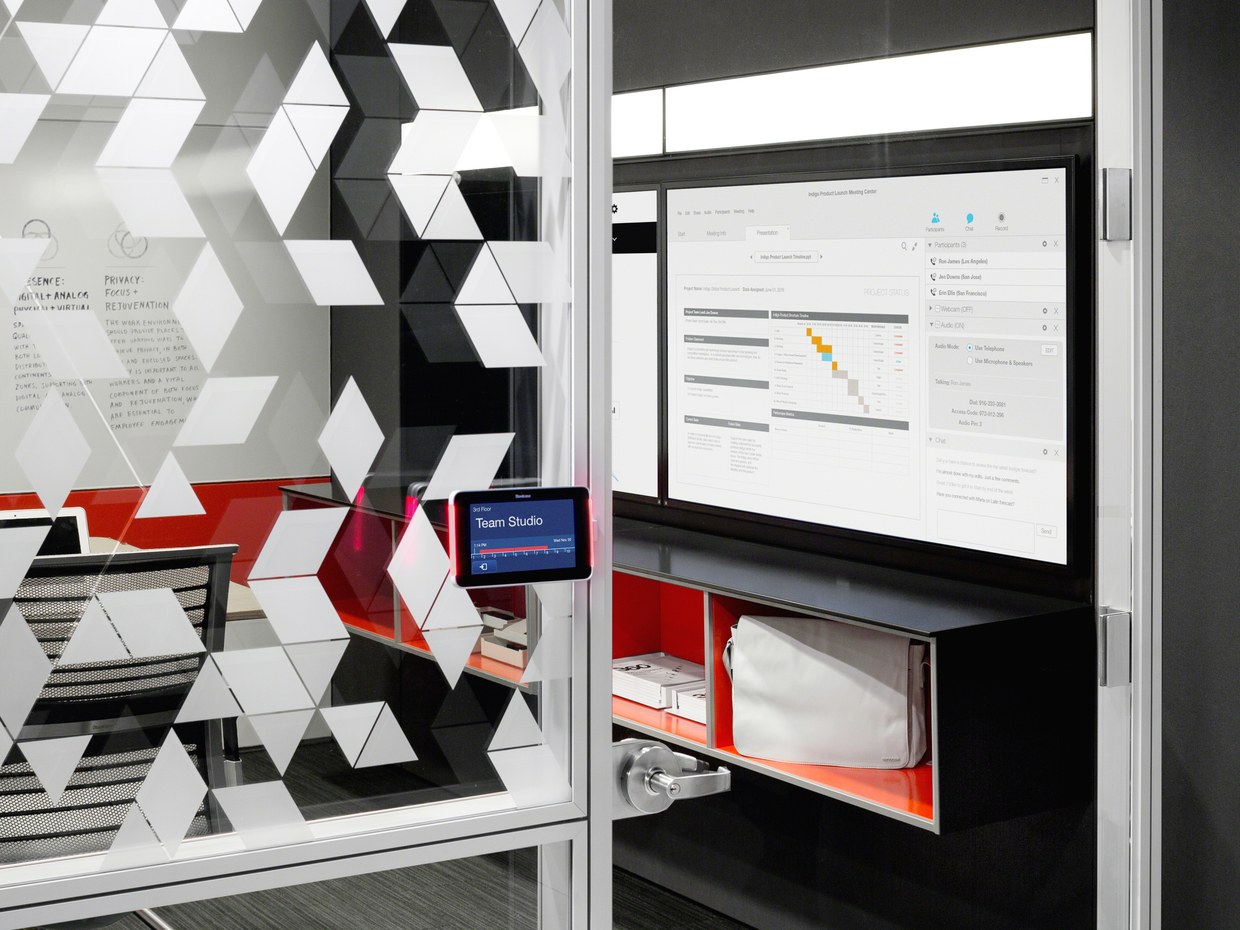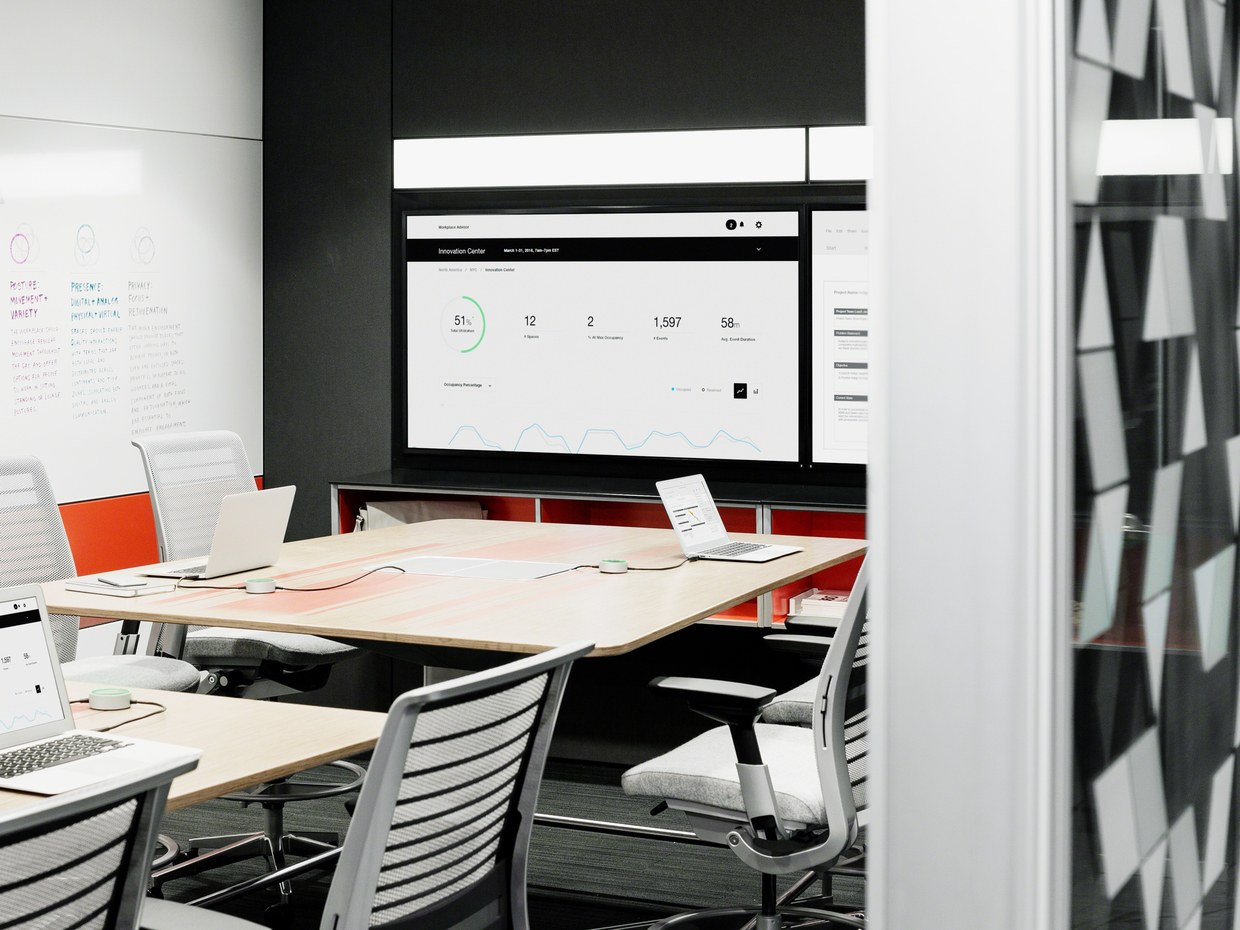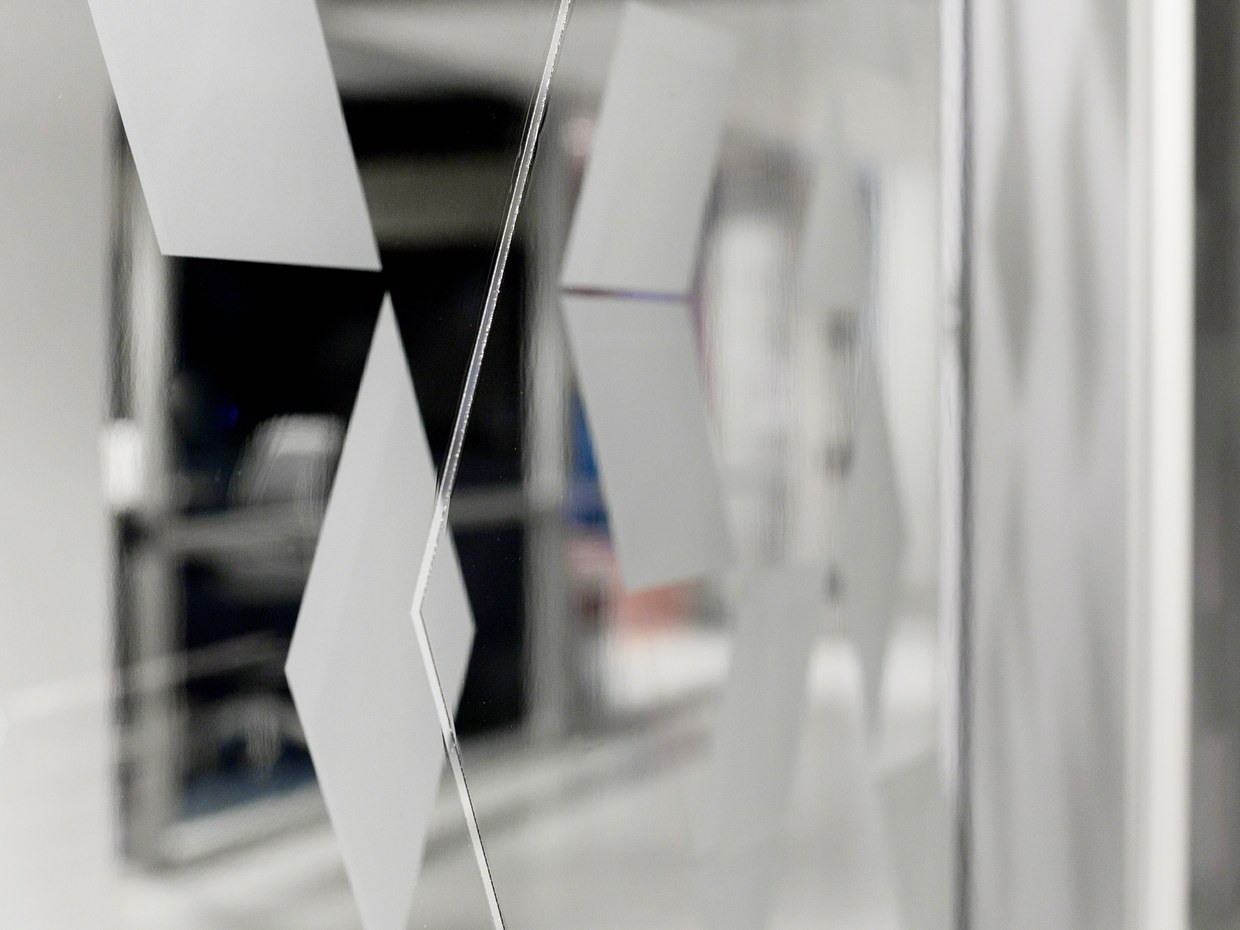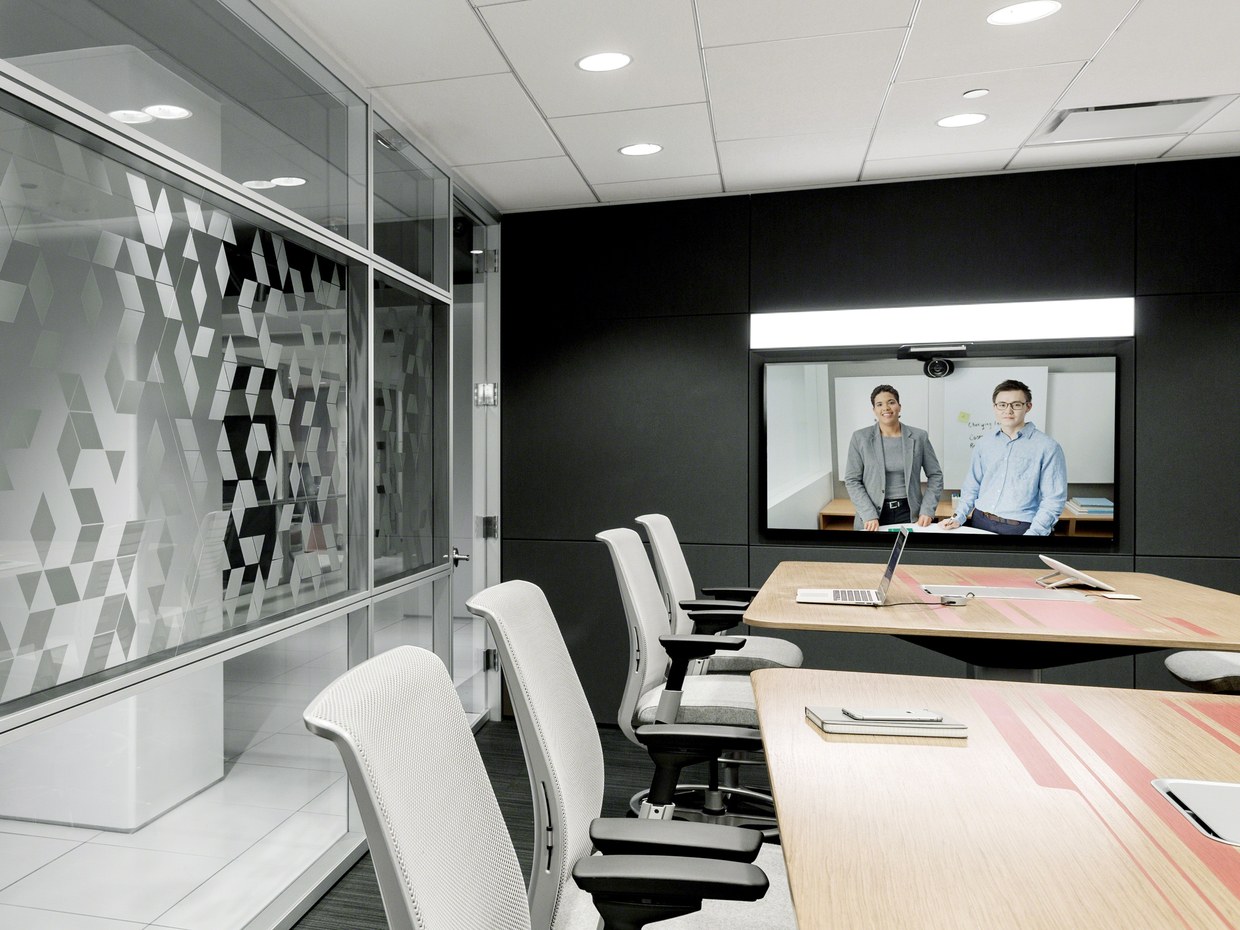Commercial Interior Glass Design
Commercial interior glass has been popularized in open office designs. This is nothing new. It allows generous amounts of natural light to permeate offices historically “cubed-in” and creates a task-oriented fish bowl transparency. Managers and co-workers can monitor with hovering.
But the growth of digital screens combined with glass-centric designs also comes with a potential problem. Open-plan offices and glass-walled conference rooms promote transparency, but they also make it impossible to conduct business privately, especially with digital devices. Any conference room discussion requiring discretion—financial reviews, employee evaluations, or top secret projects —calls for creative workarounds. Employees get nervous when post-its start covering the entire glass of a conference room. Some companies might even choose to go off-site because privacy is so limited.
To combat this problem, the trend in commercial interior glass has included textures, overlays, resins, or tints. Putting textures, logos, and patterns on glass can introduce an element of design while offering some privacy. But what if there was an option to keep clear glass while offering a blackout cloaking on all digital screens?
Screen Cloaking Glass
Steelcase has introduced a unique solution to this problem. It’s called Casper Privacy Film. By applying it to the walls of your conference room, everything will be seen, except digital screens. You’ll be able to run through slides and presentation without concern because, from outside the room, all screens look like black boxes.
Casper, developed by Steelcase subsidiary Designtex, comes in two layers. A transparent sheet, available in 15 loosely arranged geometric prints, covers the exterior side of the glass. A “cloaking” film coats the interior. The company won’t say exactly how the Casper film works or what it’s made from, but it blocks the wavelengths of light emitted by LED and LCD screens. Screens stay camouflaged, while the room’s inhabitants, and their body language and facial expressions, remain visible. In function, Casper earns comparisons to privacy screens that you attach to your laptop. Those deter shoulder surfers, as well, but use lenticular lenses to cut out any peripheral peeping.
Casper is ultimately at the forefront of the digital age evolution of curtains, blinds, and those privacy glass appliqués that suggest transparency, but are more opaque than not. The Casper film is just the beginning.
ABOUT US
At InteriorLOGIC, we build work environments. From our home office in Madison, WI our award-winning commercial interior design team focuses on creating spaces that work. We continually work to improve the end user experience with each design and our team is well-suited for challenging projects including LEED certification and sustainability projects. For more information about our business and approach, please visit www.intlogic.com.








